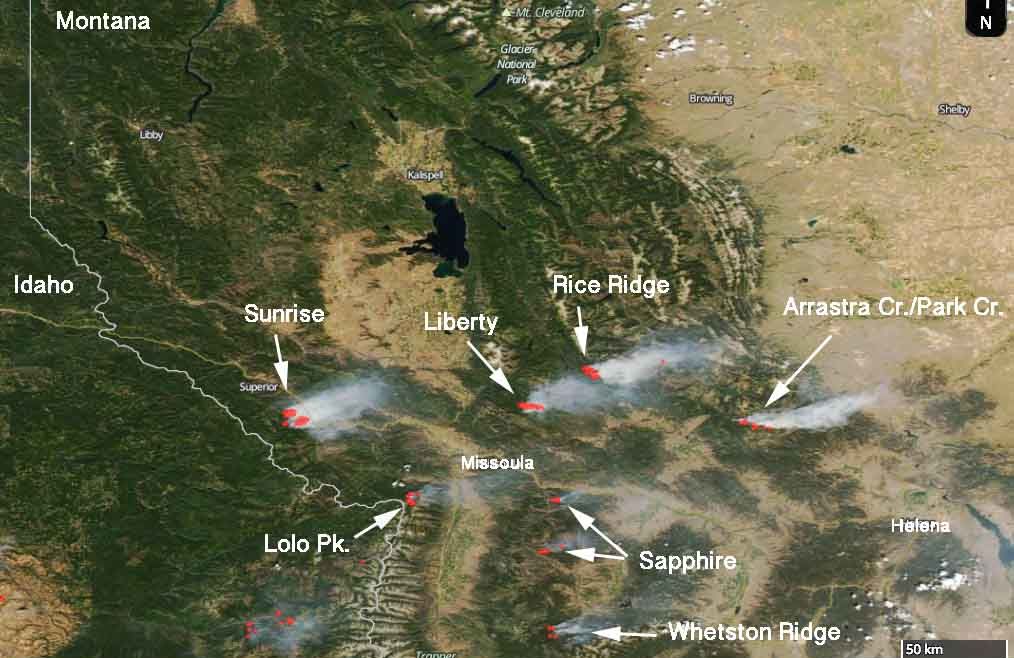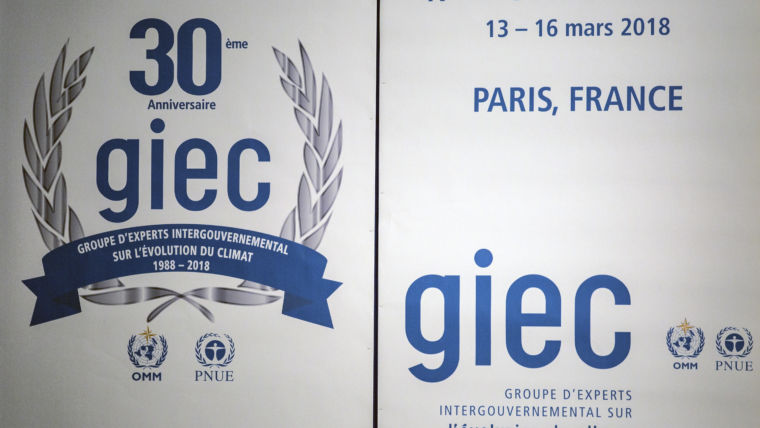One of the first consequences of a warming climate that I said would occur is now happening and being confirmed by data. Scientists predicted that the snow pack in the Rocky Mountains would shrink as a result of shorter and warmer winters. The principal problem that was foreseen was less water flowing into the rivers which flow into the Great Plains that provide irrigation for the farmers and ranchers that feed the world.
Another danger is that our eco system relies on the seasons happening in a consistent and predictable fashion. The complex, fragile and delicate balance of nature would get torn apart. For example, we rely heavily on pollinators being in the right place at the right time. And our birds rely on food being where they expect and need it when they migrate. This balance is being torn apart not decades from now. Today.
What I hadn’t contemplated was how the lack of water would create the conditions for bigger and more frequent wild fires. As the following article points out, this is occurring in the Sierra Nevada as well and really impacting California.
It’s sad that I used to go backpacking in the mountains, mostly in the western US, to enjoy the fresh air and get away from urban pollution. It’s ironic that now when I go into the mountains the air is terribly polluted with smoke that at times is quite thick while at the same time, we have experienced phenomenal success cleaning up urban air by closing down coal fire power plants and eliminating the massive amounts of small particulate matter that they produce. At times, it may be more dangerous for asthmatics to be out west and in the mountains than in downtown Chicago!!
“Snowpack in the western United States has declined by an area the size of South Carolina.”
“That’s bad news for the local hydrology in many places — melting snowpack is a major source of fresh water in many ecosystems throughout the West and helps feed rivers that provide drinking water for human communities.”
“Changes in Western snow patterns may also be worsening wildfires in already vulnerable arid states.”
“the West has seen dramatic declines. About 13 percent of all the snowy areas in those states have lost large masses of snow — declining by 41 percent on average — over the last few decades.”
“the snow season has been growing shorter across the country. Since the 1980s, it has shrunk by an average of 34 days across nearly 10 percent of the nation. In the West, that’s largely because spring is starting earlier each year, and in the East, it’s because the summer is lasting later”
‘Our Winters are Getting Sick’
Chelsea Harvey
E&E News reporter
Snowpack in the western United States has declined by an area the size of South Carolina.
Those are the newest findings in a long string of research documenting dramatic snow losses and shorter snow seasons in America’s iconic mountain ranges.
That’s bad news for the local hydrology in many places — melting snowpack is a major source of fresh water in many ecosystems throughout the West and helps feed rivers that provide drinking water for human communities.
That’s not the only problem. Changes in Western snow patterns may also be worsening wildfires in already vulnerable arid states.
Multiple new studies, presented at a major scientific conference in Washington, D.C., this week, underscore those rising risks. The new snowpack paper, published in the journal Geophysical Research Letters, provides some of the sharpest measurements yet across the continental United States, going back to 1982.
It finds that changes in the Eastern states have been relatively minor so far. But the West has seen dramatic declines. About 13 percent of all the snowy areas in those states have lost large masses of snow — declining by 41 percent on average — over the last few decades. The findings were presented yesterday at the fall meeting of the American Geophysical Union.
Other recent studies have come to similar conclusions.
In March, a separate study found that about a third of all monitoring sites across the Western states had seen significant declines in snowpack since the 1950s, 15 to 30 percent on average. Modeling studies have also projected that these declines are likely to continue — and potentially worsen — as the climate warms.
The authors of the new study also found that the snow season has been growing shorter across the country. Since the 1980s, it has shrunk by an average of 34 days across nearly 10 percent of the nation. In the West, that’s largely because spring is starting earlier each year, and in the East, it’s because the summer is lasting later, according to lead author Xubin Zeng of the University of Arizona.
A separate study, also published this week in the Journal of Applied Meteorology and Climatology, confirms the pattern. Analyzing data collected across the Western states since the 1980s, researchers found that snow season is “being squeezed on both sides,” according to study co-author Amato Evan of the Scripps Institution of Oceanography. Overall, there’s less snow, and it’s melting earlier.
“I would make the argument that our winters are getting sick, and we know the reason why — it’s global warming; it’s rising temperatures,” Evan said in a presentation of his findings yesterday morning. “And that’s the only logical explanation for what’s happening.”
Some of the biggest environmental challenges currently facing Western states involve tighter water resources and an increase in wildfires, which many scientists argue are influenced by the changing climate.
Scientists have suggested that a shrinking snow season may lead to drier landscapes and worsening fire seasons. And recent research is confirming the link.
New findings, also presented this week at the AGU meeting, have compared the timing of the annual snowmelt across the West — which generally kicks off with the beginning of spring — and the severity of local fire seasons. The research found a strong connection, although the relationship wasn’t exactly the same everywhere.
In some places, where vegetation tends to be sparse and patchy, a strong snow season — or at least a later snowmelt — can actually increase the risk of wildfires. That’s because melting water encourages plant growth, which provides more fuel for wildfires to burn in places where the vegetation is often limited.
In other places, early snowmelt appears to be a big driver of wildfires, including sensitive regions like the Sierra Nevada in California, where snowpack has suffered major declines. Early melts can cause the landscape to dry out faster as the warm season goes on, increasing the likelihood of a blaze.
The research is some of the first to demonstrate a link between satellite-based measurements of snowmelt and wildfires in the Western states, according to co-author Donal O’Leary of the University of Maryland, who presented the findings yesterday.
Under the influence of continued warming, that means events like this year’s devastating Camp Fire in California may become a greater risk in the future. Scientists note that the current trends — declining snowpack and shrinking snow seasons — will only grow worse as temperatures continue to rise. The measurements from the past few decades are evidence of climate change already in action.
“Our results are, in a sense, saying that what people are suggesting we should be seeing over the 21st century is in effect already happening,” Evan said.



